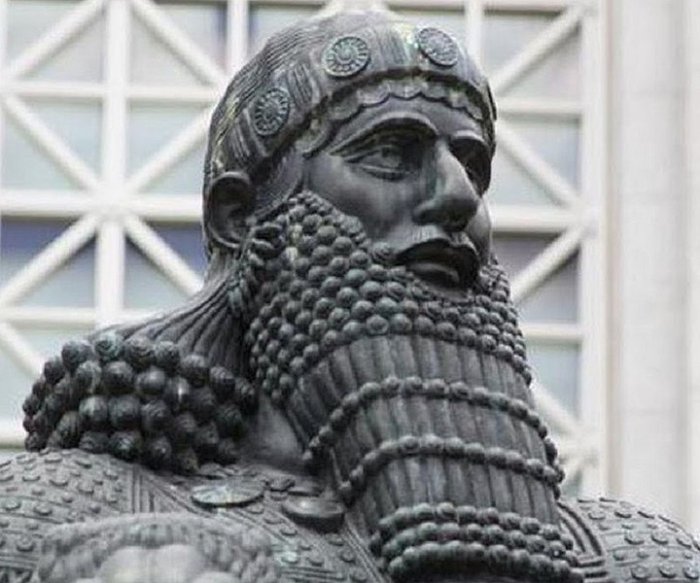Hammurabi: Great King Of Babylon And His Code Of Justice
A. Sutherland - AncientPages.com - Ancient Babylon was home to some powerful dynasties and rulers.
Hammurabi. Image credit: Windu1789 - CC BY-SA 4.0
One of them was Hammurabi, the sixth king in the Babylonian dynasty, who ruled in central Mesopotamia (modern Iraq) from 1792 to 1750 BC.
Who Was This Great King Of Babylon?
First, he proclaimed one of the earliest and most complete ancient legal codes but also contributed much more.
Hammurabi ("Hammu" means "family" in Amorite, and "rapi" means "great" in Akkadian) was one of the most significant historical figures of antiquity; he was a builder, conqueror, and lawmaker.
Ancient sources say that he built up Babylon until it was more powerful than Ur or any other city of its time and made the town the religious center.
Marduk, son of Enki, was declared Babylon's god and the greatest of all the gods, which gave him power and authority to relieve his father of his rank as chief god. Despite many protests, it happened according to Hammurabi's decision.
At the time Hammurabi ascended to the throne, Babylon was already a great state, which included, among others, Kish, Sippar, and Borsippa; however, Hammurabi recognized the authority of Shamshi-Adad I, king of Assyria and Mari, at that time. In the 30th year of his reign, he expanded his kingdom by conquering Larsa, Eshnunna, Assyria, and Mari. For the first time since the Third Dynasty of Ur, he created a powerful Babylonian Empire.
While involved in military and political advances, he also supervised his irrigation projects and the construction of fortifications and temples celebrating Babylon's patron deity, Marduk. Building spectacular pyramids, temples, and towers was difficult because there was no stone in Babylonia.
The Statue of Marduk depicted on a cylinder seal of the 9th century BC Babylonian king Marduk-zakir-shumi I. Detailed info, from Schaudig (2008). Image credit: Franz Heinrich Weißbach - Public Domain
According to Hammurabi's ingenious designs, the impressive structures of Babylon were built of bricks by molding and baking the clay, which hardened into bricks with perfect quality that has survived until today.
At its peak, Babylon, a trade and cultural center, was inhabited by about 200,000 people; at the center of this gigantic city with towers, palaces, and gardens, there was a vast ziggurat, estimated to be about 300 feet tall, according to archaeologists.
The splendid reign of Hammurabi lasted fifty−five years. After his death, great Babylon gradually declined.
The extent of the Babylonian Empire at the start and end of Hammurabi's reign, located in what today is modern-day Kuwait and Iraq. Image credit: MapMaster - CC BY-SA 4.0
Not much is left after Hammurabi's spectacular Babylon; no archives survived, and the only reliable historical documents that tell stories about Babylon are clay tablets unearthed at other locations.
Code Of Hammurabi
One of Hammurabi's most famous achievements is his law code (influenced mainly by Sumerian culture), which included many harsh punishments.
His Code, discovered in 1901, proclaimed at the end of Hammurabi's reign and supporting the doctrine of 'an eye for an eye' – is a collection of 282 laws and standards, indispensable rules for commercial interactions and punishments to meet the requirements of justice.
The black stone stele containing Hammurabi's Code was made from a single, four-ton slab of diorite, a durable but difficult to carve.
At its top is a two-and-a-half-foot relief carving of a standing Hammurabi receiving the law— symbolized by a measuring rod and tape—from the seated Shamash, the Babylonian god of justice.
Hammurabi’s Code. The prologue of the Code of Hammurabi (the 305 first inscribed squares on the stele). Some gaps in the list of benefits bestowed on cities recently annexed by Hammurabi may prove the tablet is older than the celebrated basalt stele (also in the Louvre). Image credit: Unknown artist - Louvre Museum
The rest of the seven-foot-five-inch monument is covered with columns of chiseled cuneiform script.
Hammurabi's Code was looted by later invaders and rediscovered in 1901 by a French archaeological team in present-day Iran.
The Code's 282 edicts – from family law to professional contracts and administrative law – are all written in 'if-then form. The edicts outline different standards of justice for the three classes of Babylonian society – the propertied class, freedmen, and enslaved people. A doctor's fee for curing a severe wound would be ten silver shekels for a gentleman, 5 shekels for a freedman, and two for an enslaved person.
Penalties for malpractice followed the same scheme: a doctor who killed a wealthy patient would have his hands cut off, while only financial restitution was required if the victim was enslaved.
Hammurabi's Code was not the earliest collection of laws, but his version became the most complete and famous in human history.![]()
Written by – A. Sutherland AncientPages.com Staff Writer
Updated on March 24, 2024
Copyright © AncientPages.com All rights reserved. This material may not be published, broadcast, rewritten or redistributed in whole or part without the express written permission of AncientPages.com
Expand for referencesReferences:
Goodspeed, G. S. A History of the Babylonians and Assyrians
Kriwaczek, P. Babylon: Mesopotamia and the Birth of Civilization
Charles River Editors. Babylon
More From Ancient Pages
-
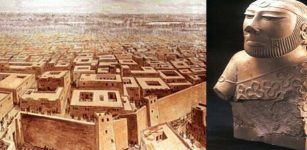 Controversial Ancient History Of Harappa And Mohenjo Daro – Advanced Indus Valley Civilization Pre-Dates Egypt’s Pharaohs And Mesopotamia
Civilizations | Apr 15, 2017
Controversial Ancient History Of Harappa And Mohenjo Daro – Advanced Indus Valley Civilization Pre-Dates Egypt’s Pharaohs And Mesopotamia
Civilizations | Apr 15, 2017 -
 4,000-Year-Old Village Mentioned In Ancient Texts Unearthed Near Sacred City Of Varanasi
Archaeology | Mar 13, 2020
4,000-Year-Old Village Mentioned In Ancient Texts Unearthed Near Sacred City Of Varanasi
Archaeology | Mar 13, 2020 -
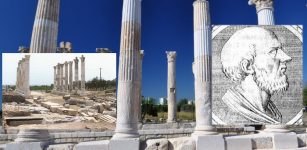 Archaeologists Focus On Greek Poet Aratus’ Memorial Tomb And Ruins Of Soli Pompeiopolis
Archaeology | Aug 12, 2020
Archaeologists Focus On Greek Poet Aratus’ Memorial Tomb And Ruins Of Soli Pompeiopolis
Archaeology | Aug 12, 2020 -
 Grave Creek Mound – One Of North America’s Most Curious Ancient Monuments
Featured Stories | Jan 10, 2018
Grave Creek Mound – One Of North America’s Most Curious Ancient Monuments
Featured Stories | Jan 10, 2018 -
 Incredible Find – 3,000-Year-Old Canoe Found In Wisconsin’s Lake Mendota
Archaeology | Sep 25, 2022
Incredible Find – 3,000-Year-Old Canoe Found In Wisconsin’s Lake Mendota
Archaeology | Sep 25, 2022 -
 First Dream Of The New Year – Japanese Hatsuyume Tradition
Ancient Traditions And Customs | Jan 1, 2021
First Dream Of The New Year – Japanese Hatsuyume Tradition
Ancient Traditions And Customs | Jan 1, 2021 -
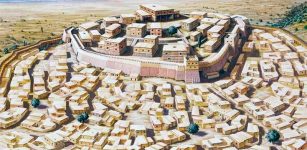 Ancient City Of Troy Was Destroyed By An Earthquake That Ended The Trojan War – Archaeologists Say
Archaeology | Jun 14, 2017
Ancient City Of Troy Was Destroyed By An Earthquake That Ended The Trojan War – Archaeologists Say
Archaeology | Jun 14, 2017 -
 Phoenicians: Powerful Traders And Their Remarkable Seafaring Achievements
Civilizations | Jan 4, 2021
Phoenicians: Powerful Traders And Their Remarkable Seafaring Achievements
Civilizations | Jan 4, 2021 -
 Bandelier National Monument: Unusual Ancient Ruins Of Pueblo People In The Southwest
Civilizations | Jun 30, 2016
Bandelier National Monument: Unusual Ancient Ruins Of Pueblo People In The Southwest
Civilizations | Jun 30, 2016 -
 Cambridge Supports Nigeria’s Claim For Return Of Benin Artefacts From University Collections
Archaeology | Aug 2, 2022
Cambridge Supports Nigeria’s Claim For Return Of Benin Artefacts From University Collections
Archaeology | Aug 2, 2022 -
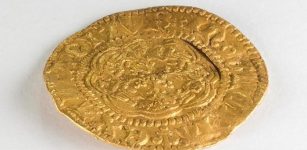 How Did Canada’s Oldest Coin Make Its Way To Newfoundland’s South Coast?
Archaeology | Nov 14, 2022
How Did Canada’s Oldest Coin Make Its Way To Newfoundland’s South Coast?
Archaeology | Nov 14, 2022 -
 Mysterious Inca Citadel With Platforms, Passages And Walls Discovered In Peru’s Rainforest
Archaeology | Oct 15, 2017
Mysterious Inca Citadel With Platforms, Passages And Walls Discovered In Peru’s Rainforest
Archaeology | Oct 15, 2017 -
 European Mythical Creatures Encountered In The Witcher Series
Featured Stories | Feb 4, 2020
European Mythical Creatures Encountered In The Witcher Series
Featured Stories | Feb 4, 2020 -
 Kindred Spirits: Why Did The Irish Build A Monument In Honor Of Native Americans?
Ancient History Facts | Oct 22, 2016
Kindred Spirits: Why Did The Irish Build A Monument In Honor Of Native Americans?
Ancient History Facts | Oct 22, 2016 -
 Dragons And Dragon Kings In Ancient Mythology
Featured Stories | Mar 8, 2023
Dragons And Dragon Kings In Ancient Mythology
Featured Stories | Mar 8, 2023 -
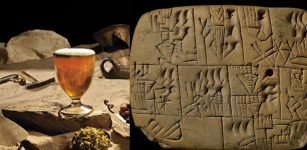 World’s Oldest Paycheck Reveals Ancient Sumerian Workers Were Paid In Beer
Ancient History Facts | Nov 22, 2018
World’s Oldest Paycheck Reveals Ancient Sumerian Workers Were Paid In Beer
Ancient History Facts | Nov 22, 2018 -
 Spartacus: The Rise And Fall Of An Unlikely Hero
Featured Stories | Oct 4, 2022
Spartacus: The Rise And Fall Of An Unlikely Hero
Featured Stories | Oct 4, 2022 -
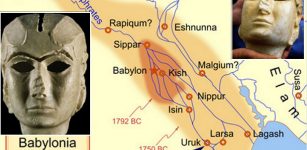 Sumerian ‘Mask Of Warka’ From Uruk: Sculptured Face May Depict Goddess Inanna
Featured Stories | Sep 15, 2016
Sumerian ‘Mask Of Warka’ From Uruk: Sculptured Face May Depict Goddess Inanna
Featured Stories | Sep 15, 2016 -
 Scientists Caution Against Over-Interpreting Influence Of Climate On Cultural Change And Catastrophe
Archaeology | Aug 18, 2022
Scientists Caution Against Over-Interpreting Influence Of Climate On Cultural Change And Catastrophe
Archaeology | Aug 18, 2022 -
 Maya Site With At Least 300 Buildings Some Of Which Are Over 8 Meters High – Discovered
Archaeology | Sep 16, 2022
Maya Site With At Least 300 Buildings Some Of Which Are Over 8 Meters High – Discovered
Archaeology | Sep 16, 2022

